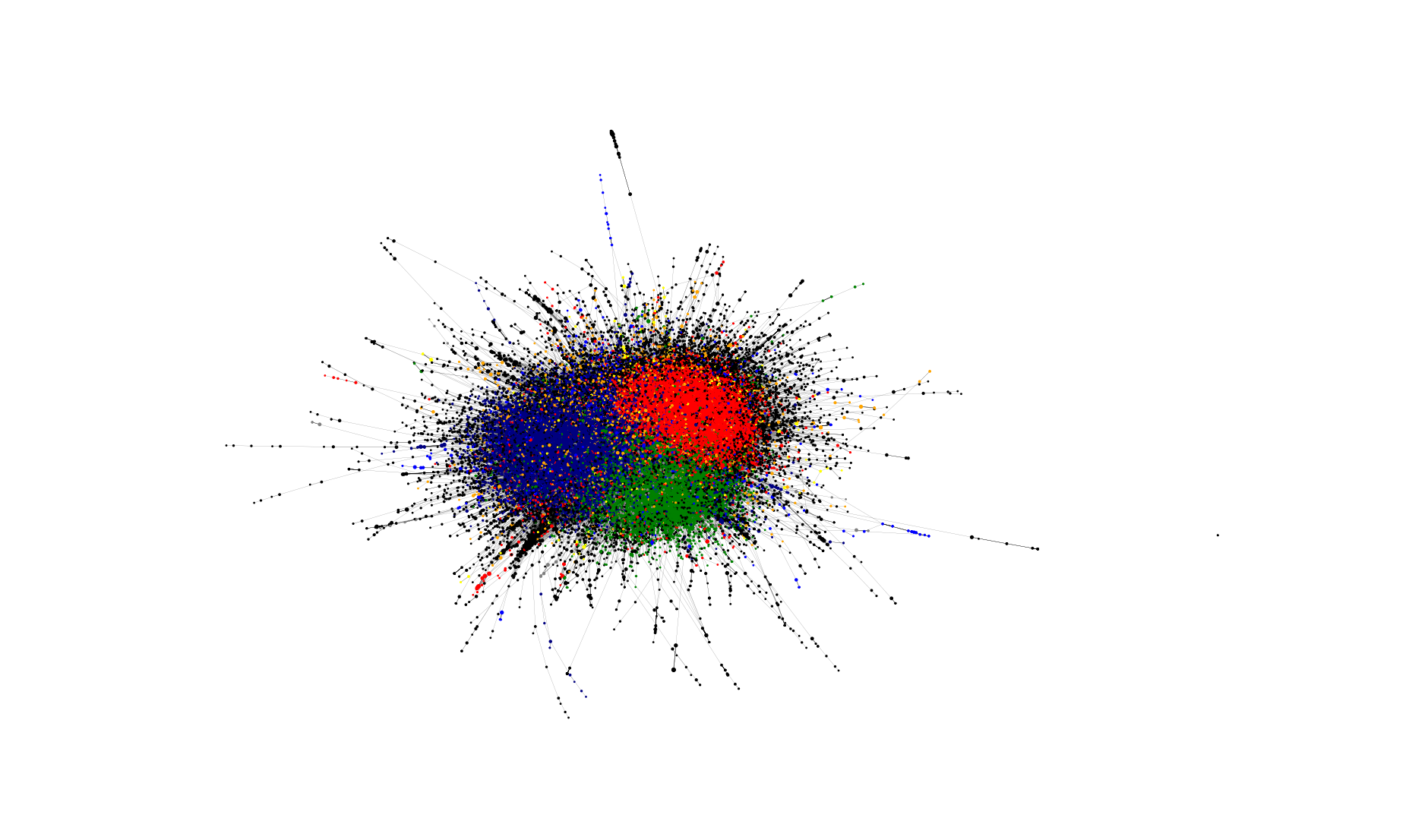Community detection (multiplex)¶
Community detection is considered when a given network’s topology is considered at meso-scales. py3plex supports both the widely used InfoMap, for which it offers a wrapper:
1 2 3 4 5 6 | from py3plex.algorithms.community_detection import community_wrapper as cw from py3plex.core import multinet network = multinet.multi_layer_network(network_type = "multiplex").load_network(input_file="../datasets/simple_multiplex.edgelist",directed=False,input_type="multiplex_edges") partition = cw.infomap_communities(network, binary="../bin/Infomap", multiplex=True, verbose=True) print(partition) |
But also the multiplex Louvain (pip install louvain):
1 2 3 4 5 6 7 8 9 10 11 12 13 14 15 16 17 18 19 20 21 22 23 24 25 26 27 28 29 30 31 32 33 34 35 36 37 38 | ## multiplex community detection! from py3plex.algorithms.community_detection import community_wrapper as cw from py3plex.core import multinet network = multinet.multi_layer_network(network_type = "multiplex").load_network(input_file="../datasets/multiplex_example.edgelist",directed=True,input_type="multiplex_edges") partition = cw.infomap_communities(network, binary="../bin/Infomap", multiplex=True, verbose=True) print(partition) ## get communities with multiplex louvain import igraph as ig import louvain #optimiser = louvain.Optimiser() network.split_to_layers(style = "none") network_list = [] ## cast this to igraph unique_node_id_counter = 0 node_hash = {} for layer in network.separate_layers: g = ig.Graph() edges_all = [] for edge in layer.edges(): first_node = int(edge[0][0]) second_node = int(edge[1][0]) g.add_vertex(first_node) g.add_vertex(second_node) edges_all.append((first_node,second_node)) print(edges_all) g.add_edges(edges_all) network_list.append(g) membership, improv = louvain.find_partition_multiplex(network_list, louvain.ModularityVertexPartition) ## for each node we get community assignment. network.monitor(membership) network.monitor(improv) |
Simple, homogeneous community detection is also possible!
1 2 3 4 5 6 7 8 9 10 11 12 13 14 15 16 17 18 19 20 21 22 23 | network = multinet.multi_layer_network().load_network(input_file="../datasets/cora.mat", directed=False, input_type="sparse") partition = cw.louvain_communities(network) #print(partition) # select top n communities by size top_n = 10 partition_counts = dict(Counter(partition.values())) top_n_communities = list(partition_counts.keys())[0:top_n] # assign node colors color_mappings = dict(zip(top_n_communities,[x for x in colors_default if x != "black"][0:top_n])) network_colors = [color_mappings[partition[x]] if partition[x] in top_n_communities else "black" for x in network.get_nodes()] # visualize the network's communities! hairball_plot(network.core_network, color_list=network_colors, layout_parameters={"iterations": args.iterations}, scale_by_size=True, layout_algorithm="force", legend=False) plt.show() |
